Enzyme Stability in Nanoparticle Preparations Part 1: Bovine Serum Albumin Improves Enzyme Function
Abstract
:1. Introduction
2. Results
2.1. BSA/B-GLU Interaction
2.2. NPs Loaded with BSA:B-GLU Complexes
2.3. B-Glu Release Study: Enzymatic Activity
3. Discussion
4. Materials and Methods
4.1. Materials
4.2. BSA:B-GLU Complexes
4.3. NPs Preparation
4.4. Characterization of BSA:B-GLU Complexes and NPs
4.4.1. ITC Titration (Protein: Enzyme Interaction)
4.4.2. AFM Analyses
4.4.3. Photon Correlation Spectroscopy (PCS) Analyses
4.4.4. Yield
4.5. Quantification of Loaded Enzyme and Enzymatic Activity
4.5.1. Enzyme Entrapment Efficiency (EE) and Loading Capacity (LC)
4.5.2. Quantification of Enzyme Activity
4.6. Release Studies
Author Contributions
Funding
Acknowledgments
Conflicts of Interest
References
- Grabowski, G.A.; Leslie, N.; Wenstrup, R. Enzyme therapy for Gaucher disease: The first 5 years. Blood Rev. 1998, 12, 115–133. [Google Scholar] [CrossRef]
- Eng, C.M.; Guffon, N.; Wilcox, W.R.; Germain, D.P.; Lee, P.; Waldek, S.; Caplan, L.; Linthorst, G.E.; Desnick, R.J. Safety and Efficacy of Recombinant Human α-Galactosidase A Replacement Therapy in Fabry’s Disease. New Engl. J. Med. 2001, 345, 9–16. [Google Scholar] [CrossRef] [PubMed] [Green Version]
- Van den Hout, H.; Reuser, A.J.; Vulto, A.G.; Loonen, M.C.; Cromme-Dijkhuis, A.; Van der Ploeg, A.T. Recombinant human alpha-glucosidase from rabbit milk in Pompe patients. Lancet 2000, 356, 397–398. [Google Scholar] [CrossRef]
- Safary, A.; Akbarzadeh Khiavi, M.; Mousavi, R.; Barar, J.; Rafi, M.A. Enzyme replacement therapies: What is the best option? Bioimpacts 2018, 8, 153–157. [Google Scholar] [CrossRef] [Green Version]
- Rigon, L.; Salvalaio, M.; Pederzoli, F.; Legnini, E.; Duskey, J.T.; D’Avanzo, F.; De Filippis, C.; Ruozi, B.; Marin, O.; Vandelli, M.A.; et al. Targeting Brain Disease in MPSII: Preclinical Evaluation of IDS-Loaded PLGA Nanoparticles. Int. J. Mol. Sci. 2019, 20, 2014. [Google Scholar] [CrossRef] [Green Version]
- Tosi, G.; Duskey, J.; Kreuter, J. Nanoparticles as carriers for drug delivery of macromolecules across the blood-brain barrier. Expert Opin. Drug Deliv. 2019, 17. [Google Scholar] [CrossRef]
- Barar, J.; Aghanejad, A.; Fathi, M.; Omidi, Y. Advanced drug delivery and targeting technologies for the ocular diseases. Bioimpacts 2016, 6, 49–67. [Google Scholar] [CrossRef] [Green Version]
- Muro, S. New biotechnological and nanomedicine strategies for treatment of lysosomal storage disorders. Wiley Interdiscip. Rev. Nanomed. Nanobiotechnol. 2010, 2, 189–204. [Google Scholar] [CrossRef] [Green Version]
- Tam, V.H.; Sosa, C.; Liu, R.; Yao, N.; Priestley, R.D. Nanomedicine as a non-invasive strategy for drug delivery across the blood brain barrier. Int. J. Pharm. 2016, 515, 331–342. [Google Scholar] [CrossRef]
- Gasper, M.M.; Blanco, D.; Cruz, M.E.; Alonso, M.J. Formulation of L-asparaginase-loaded poly(lactide-co-glycolide) nanoparticles: Influence of polymer properties on enzyme loading, activity and in vitro release. J. Control. Release 1998, 52, 53–62. [Google Scholar] [CrossRef]
- Martins, M.B.F.; Simões, S.I.D.; Cruz, M.E.M.; Gaspar, R. Development of enzyme-loaded nanoparticles: Effect of pH. J. Mater. Sci.: Mater. Med. 1996, 7, 413–414. [Google Scholar] [CrossRef]
- Rietscher, R.; Czaplewska, J.A.; Majdanski, T.C.; Gottschaldt, M.; Schubert, U.S.; Schneider, M.; Lehr, C.-M. Impact of PEG and PEG-b-PAGE modified PLGA on nanoparticle formation, protein loading and release. Int. J. Pharm. 2016, 500, 187–195. [Google Scholar] [CrossRef] [PubMed]
- Crucho, C.I.C.; Barros, M.T. Polymeric nanoparticles: A study on the preparation variables and characterization methods. Mater. Sci. Eng. C Mater. Biol. Appl. 2017, 80, 771–784. [Google Scholar] [CrossRef] [PubMed]
- Duskey, J.T.; Belletti, D.; Pederzoli, F.; Vandelli, M.A.; Forni, F.; Ruozi, B.; Tosi, G. Current Strategies for the Delivery of Therapeutic Proteins and Enzymes to Treat Brain Disorders. Int. Rev. Neurobiol. 2017, 137, 1–28. [Google Scholar] [CrossRef]
- Crotts, G.; Park, T.G. Protein delivery from poly(lactic-co-glycolic acid) biodegradable microspheres: Release kinetics and stability issues. J. Microencapsul. 1998, 15, 699–713. [Google Scholar] [CrossRef]
- Van de Weert, M.; Hennink, W.E.; Jiskoot, W. Protein Instability in Poly(Lactic-co-Glycolic Acid) Microparticles. Pharm. Res. 2000, 17, 1159–1167. [Google Scholar] [CrossRef]
- Pérez, C.; Castellanos, I.J.; Costantino, H.R.; Al-Azzam, W.; Griebenow, K. Recent trends in stabilizing protein structure upon encapsulation and release from bioerodible polymers. J. Pharm. Pharm. 2002, 54, 301–313. [Google Scholar] [CrossRef]
- Taurozzi, J.S.; Hackley, V.A.; Wiesner, M.R. Ultrasonic dispersion of nanoparticles for environmental, health and safety assessment--issues and recommendations. Nanotoxicology 2011, 5, 711–729. [Google Scholar] [CrossRef]
- Roy, I.; Gupta, M.N. Freeze-drying of proteins: Some emerging concerns. Biotechnol. Appl. Biochem. 2004, 39, 165–177. [Google Scholar] [CrossRef]
- Shulgin, I.L.; Ruckenstein, E. Preferential hydration and solubility of proteins in aqueous solutions of polyethylene glycol. Biophys. Chem. 2006, 120, 188–198. [Google Scholar] [CrossRef]
- Silva, C.; Martins, M.; Jing, S.; Fu, J.; Cavaco-Paulo, A. Practical insights on enzyme stabilization. Crit. Rev. Biotechnol. 2018, 38, 335–350. [Google Scholar] [CrossRef] [PubMed]
- Han, J.; Wang, Q.; Zhang, Z.; Gong, T.; Sun, X. Cationic bovine serum albumin based self-assembled nanoparticles as siRNA delivery vector for treating lung metastatic cancer. Small 2014, 10, 524–535. [Google Scholar] [CrossRef] [PubMed]
- Jain, N.; Bhargava, A.; Rathi, M.; Dilip, R.V.; Panwar, J. Removal of Protein Capping Enhances the Antibacterial Efficiency of Biosynthesized Silver Nanoparticles. PLoS ONE 2015, 10. [Google Scholar] [CrossRef] [PubMed] [Green Version]
- Prabhu, V.; Uzzaman, S.; Grace, V.M.B.; Guruvayoorappan, C. Nanoparticles in Drug Delivery and Cancer Therapy: The Giant Rats Tail. J. Cancer Ther. 2011, 2, 325–334. [Google Scholar] [CrossRef] [Green Version]
- Sarett, S.M.; Werfel, T.A.; Lee, L.; Jackson, M.A.; Kilchrist, K.V.; Brantley-Sieders, D.; Duvall, C.L. Lipophilic siRNA targets albumin in situ and promotes bioavailability, tumor penetration, and carrier-free gene silencing. Proc. Natl. Acad. Sci. USA 2017, 114, E6490–E6497. [Google Scholar] [CrossRef] [Green Version]
- Bs, C.; Rr, M. Enzyme thermostabilization by bovine serum albumin and other proteins: Evidence for hydrophobic interactions. Biotechnol. Appl. Biochem. 1995, 22, 203–214. [Google Scholar] [CrossRef]
- Hong, T.; Iwashita, K.; Shiraki, K. Viscosity Control of Protein Solution by Small Solutes: A Review. Curr. Protein Pept. Sci. 2018, 19, 746–758. [Google Scholar] [CrossRef]
- Jachimska, B.; Pajor, A. Physico-chemical characterization of bovine serum albumin in solution and as deposited on surfaces. Bioelectrochemistry 2012, 87, 138–146. [Google Scholar] [CrossRef]
- Wang, L.; Yu, H. Chain conformation of linear polyelectrolyte in salt solutions: Sodium poly(styrenesulfonate) in potassium chloride and sodium chloride. Macromolecules 1988, 21, 3498–3501. [Google Scholar] [CrossRef]
- Belletti, D.; Tosi, G.; Riva, G.; Lagreca, I.; Galliania, M.; Luppi, M.; Vandelli, M.A.; Forni, F.; Ruozi, B. Nutlin-3 loaded nanocarriers: Preparation, characterization and in vitro antineoplastic effect against primary effusion lymphoma. Int. J. Pharm. 2015, 490, 85–93. [Google Scholar] [CrossRef]
- Chhabra, R.; Grabrucker, A.M.; Veratti, P.; Belletti, D.; Boeckers, T.M.; Vandelli, M.A.; Forni, F.; Tosi, G.; Ruozi, B. Characterization of lysosome-destabilizing DOPE/PLGA nanoparticles designed for cytoplasmic drug release. Int. J. Pharm. 2014, 471, 349–357. [Google Scholar] [CrossRef] [PubMed]
- Yoshioka, S.; Aso, Y.; Izutsu, K.; Terao, T. The effect of salts on the stability of beta-galactosidase in aqueous solution, as related to the water mobility. Pharm. Res. 1993, 10, 1484–1487. [Google Scholar] [CrossRef] [PubMed]
- Vilella, A.; Tosi, G.; Grabrucker, A.M.; Ruozi, B.; Belletti, D.; Vandelli, M.A.; Boeckers, T.M.; Forni, F.; Zoli, M. Insight on the fate of CNS-targeted nanoparticles. Part I: Rab5-dependent cell-specific uptake and distribution. J. Control. Release 2014, 174, 195–201. [Google Scholar] [CrossRef]
- Vilella, A.; Ruozi, B.; Belletti, D.; Pederzoli, F.; Galliani, M.; Semeghini, V.; Forni, F.; Zoli, M.; Vandelli, M.A.; Tosi, G. Endocytosis of Nanomedicines: The Case of Glycopeptide Engineered PLGA Nanoparticles. Pharmaceutics 2015, 7, 74–89. [Google Scholar] [CrossRef] [PubMed] [Green Version]
- Yoshioka, S.; Aso, Y.; Izutsu, K.; Terao, T. Stability of beta-galactosidase, a model protein drug, is related to water mobility as measured by 17O nuclear magnetic resonance (NMR). Pharm. Res. 1993, 10, 103–108. [Google Scholar] [CrossRef]
- Yoshioka, S.; Aso, Y.; Izutsu, K.; Kojima, S. Is stability prediction possible for protein drugs? Denaturation kinetics of beta-galactosidase in solution. Pharm. Res. 1994, 11, 1721–1725. [Google Scholar] [CrossRef]
- Cohen-Sela, E.; Chorny, M.; Koroukhov, N.; Danenberg, H.D.; Golomb, G. A new double emulsion solvent diffusion technique for encapsulating hydrophilic molecules in PLGA nanoparticles. J. Control. Release 2009, 133, 90–95. [Google Scholar] [CrossRef] [PubMed]
- Iqbal, M.; Zafar, N.; Fessi, H.; Elaissari, A. Double emulsion solvent evaporation techniques used for drug encapsulation. Int. J. Pharm. 2015, 496, 173–190. [Google Scholar] [CrossRef]
- Garti, N.; Bisperink, C. Double emulsions: Progress and applications. Curr. Opin. Colloid Interface Sci. 1998, 3, 657–667. [Google Scholar] [CrossRef]
- Gegg, M.E.; Burke, D.; Heales, S.J.R.; Cooper, J.M.; Hardy, J.; Wood, N.W.; Schapira, A.H.V. Glucocerebrosidase deficiency in substantia nigra of parkinson disease brains. Ann. Neurol. 2012, 72, 455–463. [Google Scholar] [CrossRef] [Green Version]
- Li, H.; Ham, A.; Ma, T.C.; Kuo, S.-H.; Kanter, E.; Kim, D.; Ko, H.S.; Quan, Y.; Sardi, S.P.; Li, A.; et al. Mitochondrial dysfunction and mitophagy defect triggered by heterozygous GBA mutations. Autophagy 2019, 15, 113–130. [Google Scholar] [CrossRef] [PubMed] [Green Version]
Sample Availability: Samples of the compounds are not available from the authors. |
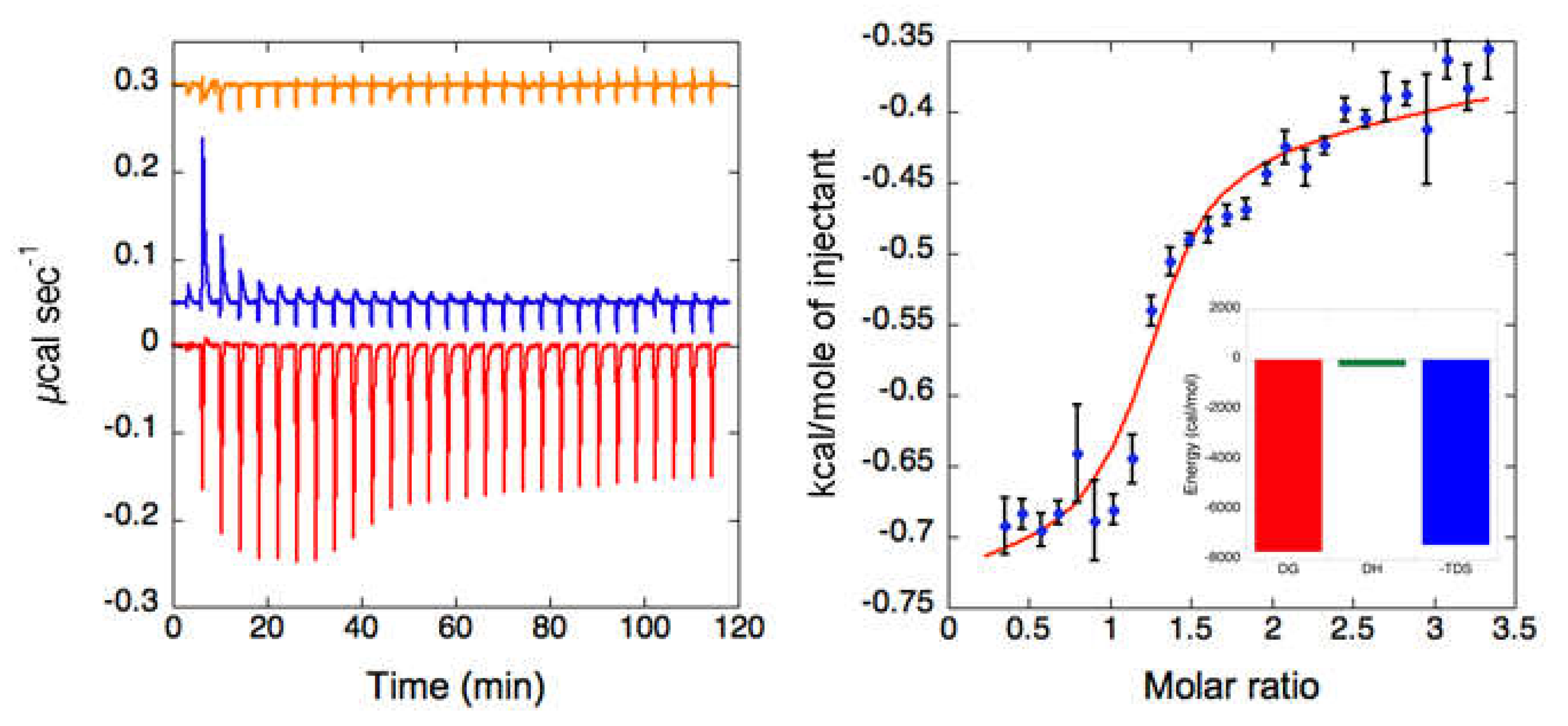
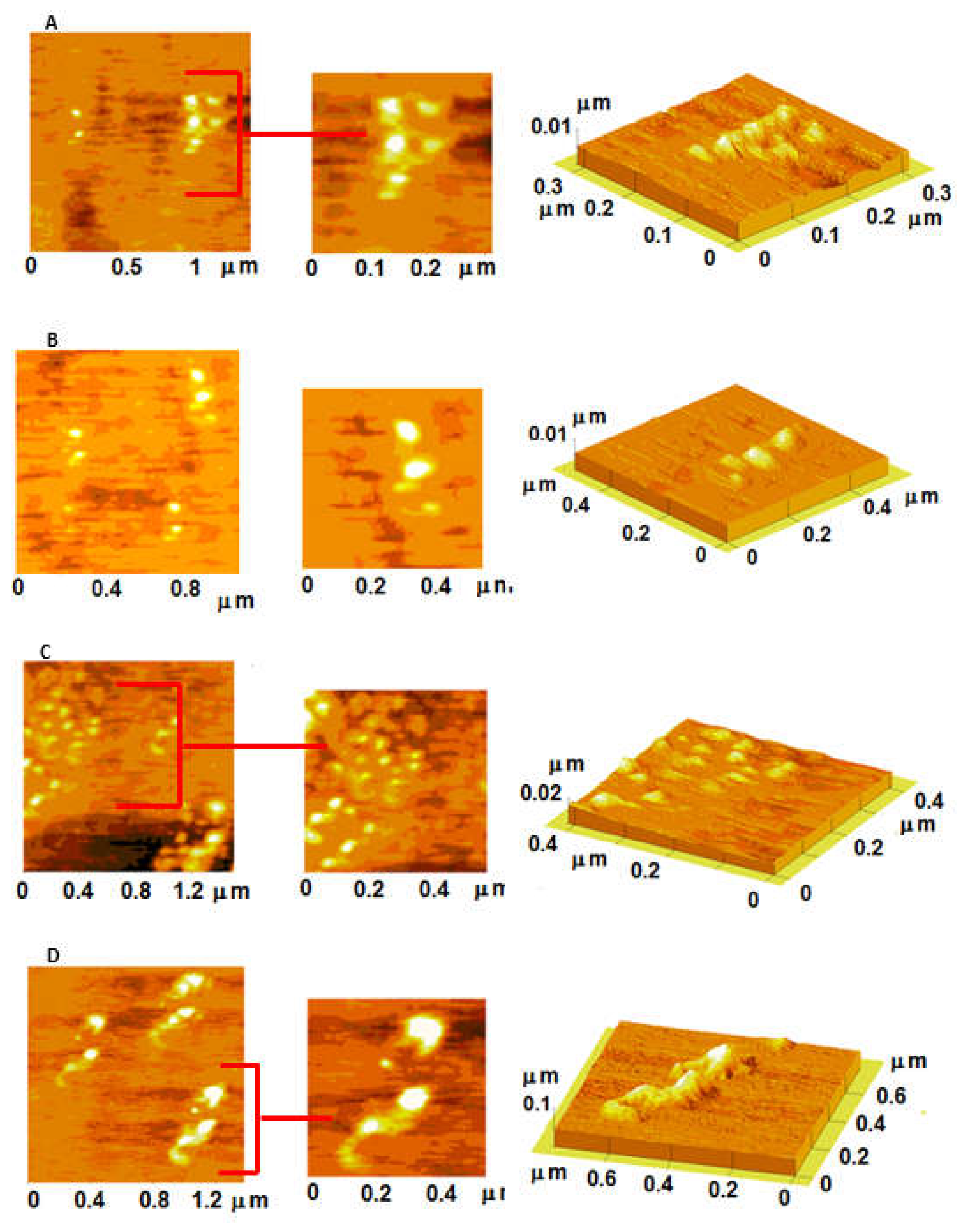
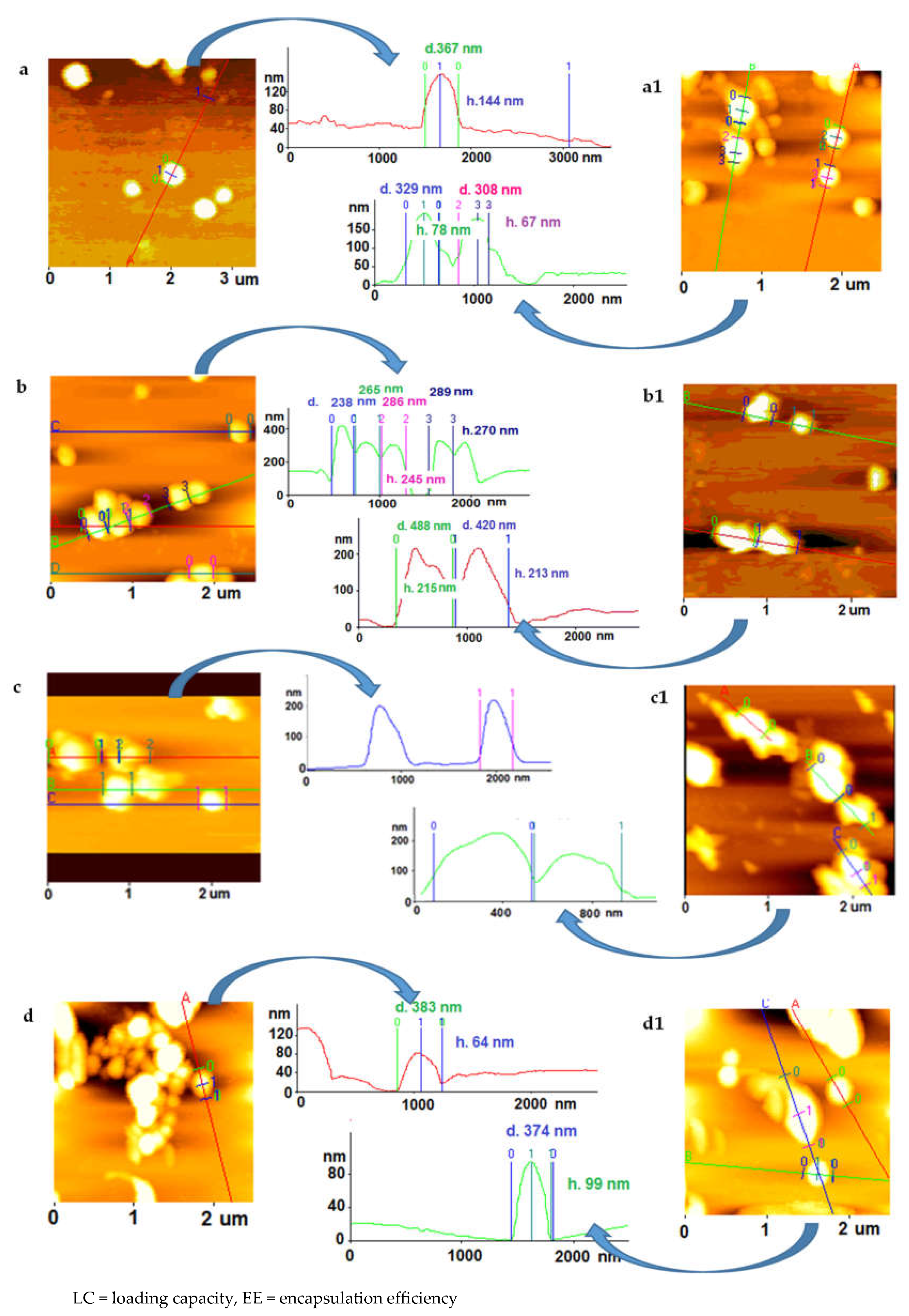
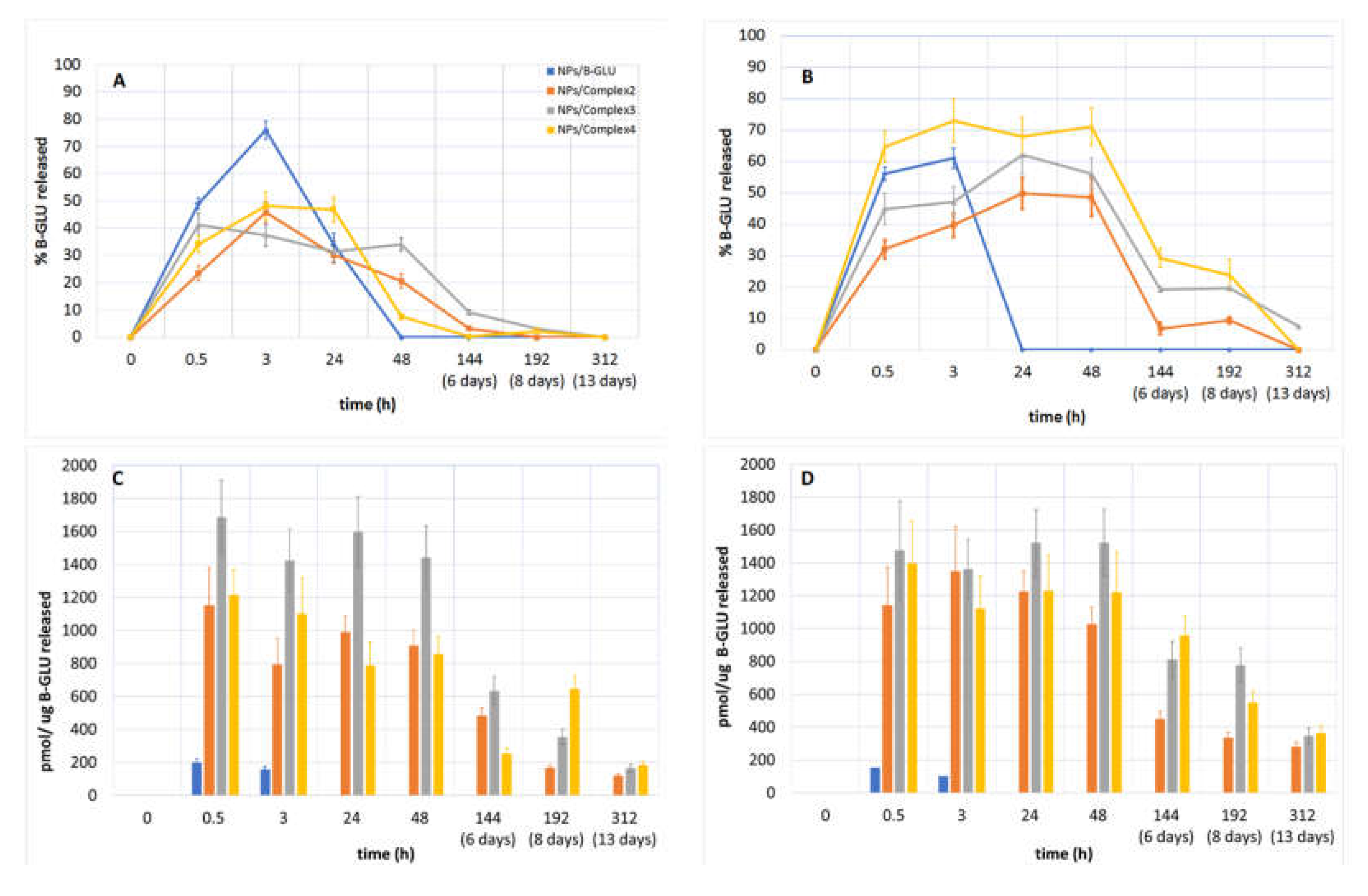
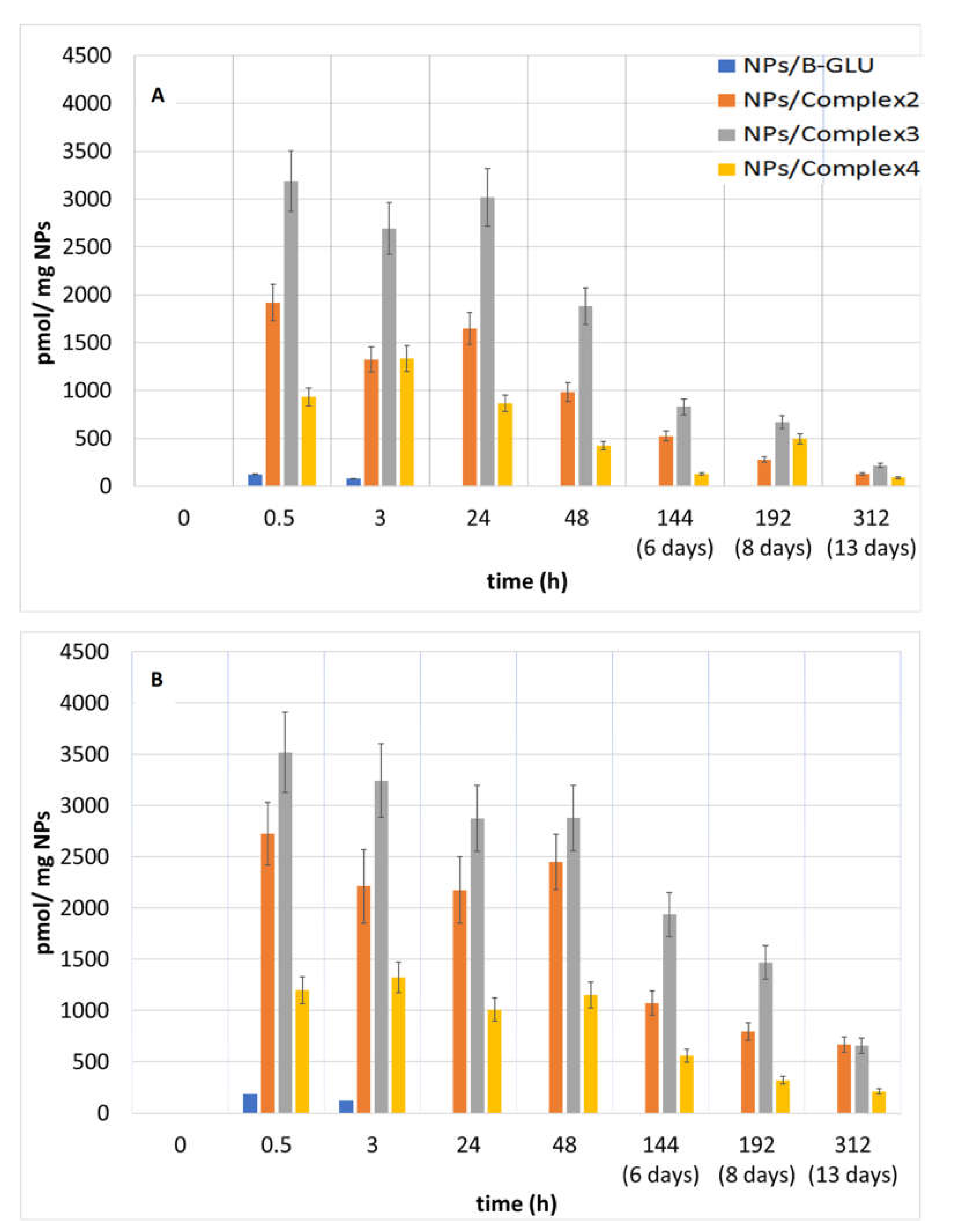
| PDI a (S.D.) | Peak 1 nm ± S.D. (% ± S.D.) | Peak 2 nm ± S.D. (% ± S.D.) | Peak 3 nm ± S.D. (% ± S.D.) | Zpot b mV (S.D.) | pmol Product/ug B-GLU (Activity at pH 6.7 ± S.D.) | |
|---|---|---|---|---|---|---|
| B-GLU | 0.31 ± 0.04 | 9.5 ± 0.9 (78 ± 12) | 144 ± 45 (24 ± 14) | / | 16662 ± 800 | |
| BSA solution (0.15 nM) | 0.28 ± 0.01 | 3.1± 0.1 (77 ± 3) | 19 ± 3 (18 ± 2) | 102 ± 25 (5 ± 2) | −20 ± 2 | |
| BSA solution (0.75 nM) | 0.33 ± 0.02 | 2.7 ± 0.4 (56 ± 9) | 32 ± 7 (45 ± 11) | / | −19 ± 5 | |
| BSA solution (1.5 nM) | 0.38 ± 0.03 | 2.4 ± 0.4 (61 ± 12) | 38 ± 3 (43 ± 7) | / | −13 ± 3 | |
| BSA/B-GLU 2:1 mol mol | 0.34 ± 0.01 | 3.5 ± 0.3 (46 ± 8) | 288 ± 34 (53 ± 12) | −16 ± 1 | 16253 ± 775 | |
| BSA/B-GLU 10:1 mol mol | 0.51 ± 0.04 | 2.5 ± 0.5 (25 ± 11) | 62 ± 6 (48 ± 14) | 241 ± 45 (25 ± 13) | −18 ± 4 | 16588 ± 675 |
| BSA/B-GLU 20:1 mol mol | 0.62 ± 0.05 | 2.3 ± 0.4 (16 ± 12) | 73 ± 5 (42 ± 12) | 369 ± 68 (41 ± 7) | −16 ± 3 | 17532 ± 943 |
| Samples | Z-Average nm ± S.D. | PDI a ± S.D. | D(i)50 nm ± S.D. | D(i)90 nm ± S.D. | AFM Diameternm ± S.D. | ζ-pot mV ± S.D. | Yield% b ± S.D. | LC% ± S.D. | EE% ± S.D. |
|---|---|---|---|---|---|---|---|---|---|
| NPs | 194 ± 17 | 0.06 ± 0.02 | 200 ± 16 | 311 ± 20 | 320 ± 47 | −21 ± 3 | 86.2 ± 2.1 | ||
| NPs B-GLU | 199 ± 28 | 0.17 ± 0.04 | 221 ± 26 | 376 ± 42 | 311 ± 69 | −24 ± 6 | 77.6 ± 3.3 | 0.6 ± 0.1 | 5.7 ± 0.9 |
| NPs/BSA (0.15 nM) | 185 ± 11 | 0.07 ± 0.02 | 189 ± 24 | 267 ± 21 | 215 ± 77 | −19 ± 3 | 72.2 ± 3.1 | ||
| NPs/Complex1 | 234 ± 19 | 0.21 ± 0.01 | 227 ± 12 | 365 ± 25 | 302 ± 34 | −19 ± 2 | 69.2 ± 4.1 | 0.7 ± 0.3 | 6.8 ± 2 |
| NPs/BSA (0.75 nM) | 229 ± 21 | 0.09 ± 0.01 | 205 ± 20 | 297 ± 12 | 265 ± 67 | −22 ± 3 | 61.2 ± 2.3 | ||
| NPs/Complex2 | 222 ± 17 | 0.11 ± 0.03 | 208 ± 19 | 332 ± 21 | 365 ± 76 | −25 ± 3 | 59.1 ± 2.6 | 3.1 ± 1.9 | 31 ± 7 |
| NPs/BSA (1.5 nM) | 234 ± 14 | 0.10 ± 0.02 | 209 ± 11 | 318 ± 11 | 318 ± 51 | −23 ± 3 | 56.9 ± 2.4 | ||
| NPs/Complex3 | 243 ± 31 | 0.14 ± 0.02 | 215 ± 11 | 339 ± 14 | 375 ± 64 | −20 ± 3 | 51.1 ± 2.2 | 3.9 ± 1.4 | 38.7 ± 4 |
| NPs/BSA (3 nm) | 265 ± 67 | 0.27 ± 0.09 | 221 ± 12 | 401 ± 21 | / | −23 ± 6 | 41.3 ± 3.1 | ||
| NPs/Complex4 | 266 ± 72 | 0.31 ± 0.09 | 253 ± 19 | 443 ± 16 | / | −22 ± 7 | 33.6 ± 7.2 | 1.2 ± 0.4 | 11 ± 5 |
© 2020 by the authors. Licensee MDPI, Basel, Switzerland. This article is an open access article distributed under the terms and conditions of the Creative Commons Attribution (CC BY) license (http://creativecommons.org/licenses/by/4.0/).
Share and Cite
Duskey, J.T.; da Ros, F.; Ottonelli, I.; Zambelli, B.; Vandelli, M.A.; Tosi, G.; Ruozi, B. Enzyme Stability in Nanoparticle Preparations Part 1: Bovine Serum Albumin Improves Enzyme Function. Molecules 2020, 25, 4593. https://doi.org/10.3390/molecules25204593
Duskey JT, da Ros F, Ottonelli I, Zambelli B, Vandelli MA, Tosi G, Ruozi B. Enzyme Stability in Nanoparticle Preparations Part 1: Bovine Serum Albumin Improves Enzyme Function. Molecules. 2020; 25(20):4593. https://doi.org/10.3390/molecules25204593
Chicago/Turabian StyleDuskey, Jason Thomas, Federica da Ros, Ilaria Ottonelli, Barbara Zambelli, Maria Angela Vandelli, Giovanni Tosi, and Barbara Ruozi. 2020. "Enzyme Stability in Nanoparticle Preparations Part 1: Bovine Serum Albumin Improves Enzyme Function" Molecules 25, no. 20: 4593. https://doi.org/10.3390/molecules25204593







